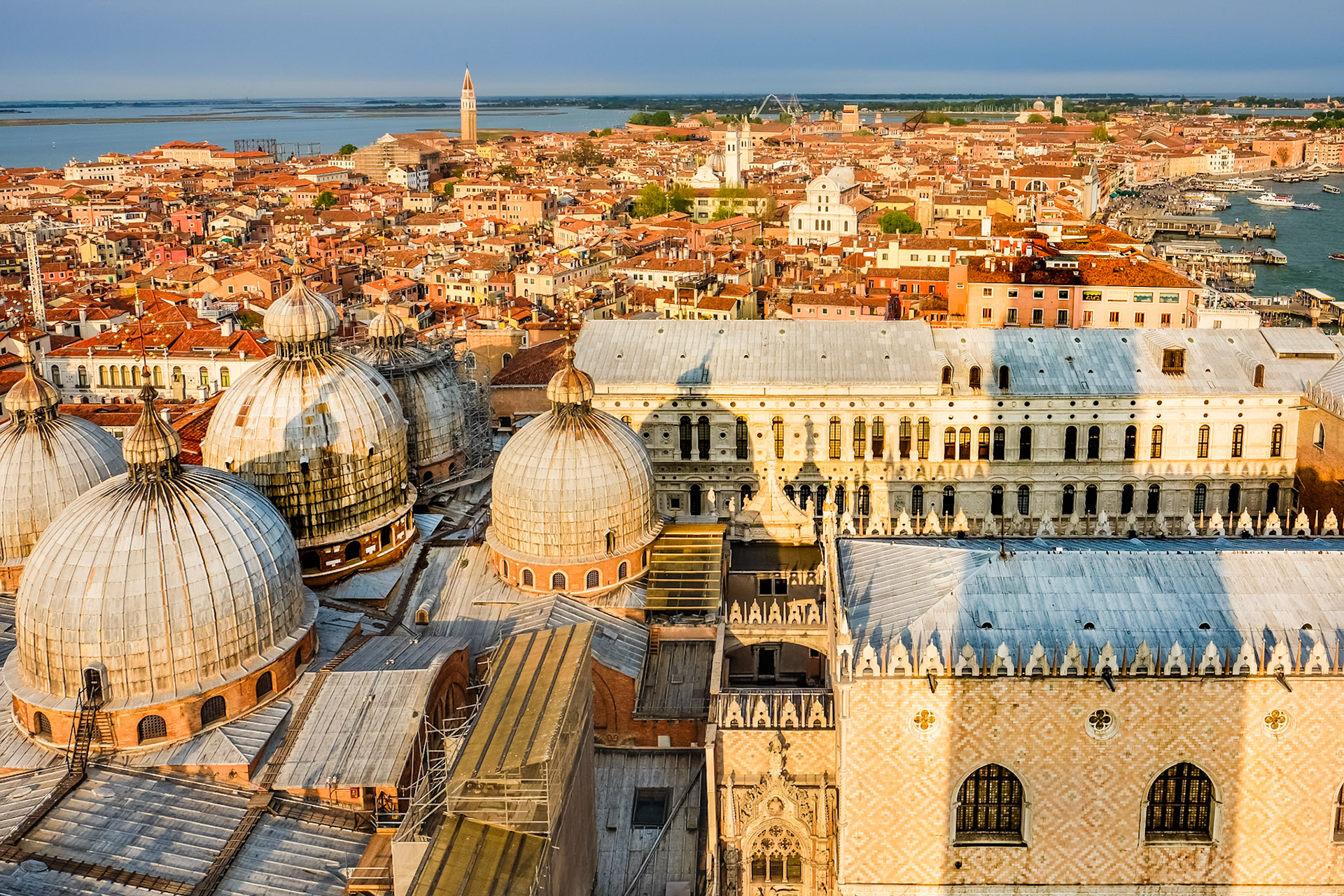St. Mark's Basilica (Basilica di San Marco), located in the heart of Venice on Piazza San Marco, is one of the most famous churches in the world and a symbol of Venice's history, culture, and artistic grandeur.
St. Mark’s Basilica was first constructed in 828 when Venetian merchants smuggled the relics of St. Mark from Alexandria, Egypt. The church was rebuilt after a fire in 976 and expanded over centuries, with its current form largely completed by 1071. Its structure is based on the shape of a Greek cross, with five massive domes that dominate the skyline.
It was initially the private chapel of the Doge of Venice, and only in 1807 did it become the city’s cathedral.

St. Mark's Basilica with its five domes
The façade is richly adorned with marble columns, sculptures, and golden mosaics, which depict biblical scenes and Venetian history. One of the most famous features of the basilica’s exterior is the Quadriga of St. Mark - four ancient bronze horses that were originally part of a chariot sculpture. The horses were brought to Venice from Constantinople after the Fourth Crusade, and replicas now stand on the church’s façade, while the originals are displayed inside.

St. Mark's Basilica - facade
Adjacent to the basilica stands the Campanile di San Marco, a towering 98.6-meter bell tower that dominates the Venetian skyline. Originally built as a lighthouse in the 12th century, it collapsed in 1902 and was rebuilt exactly as it was.
You may also like